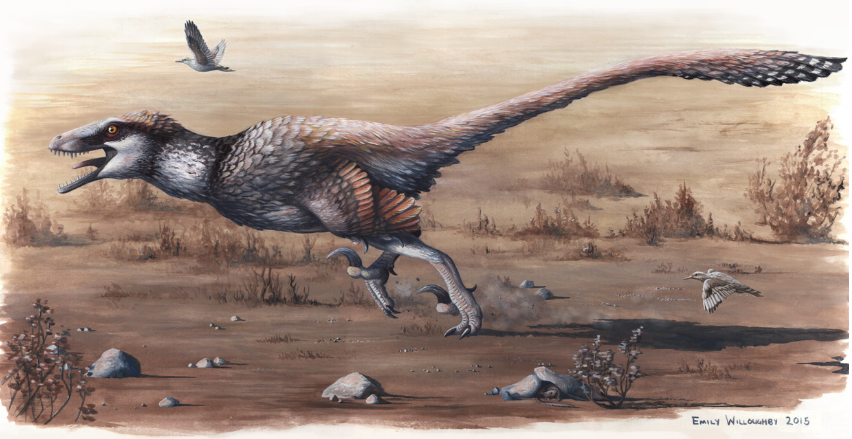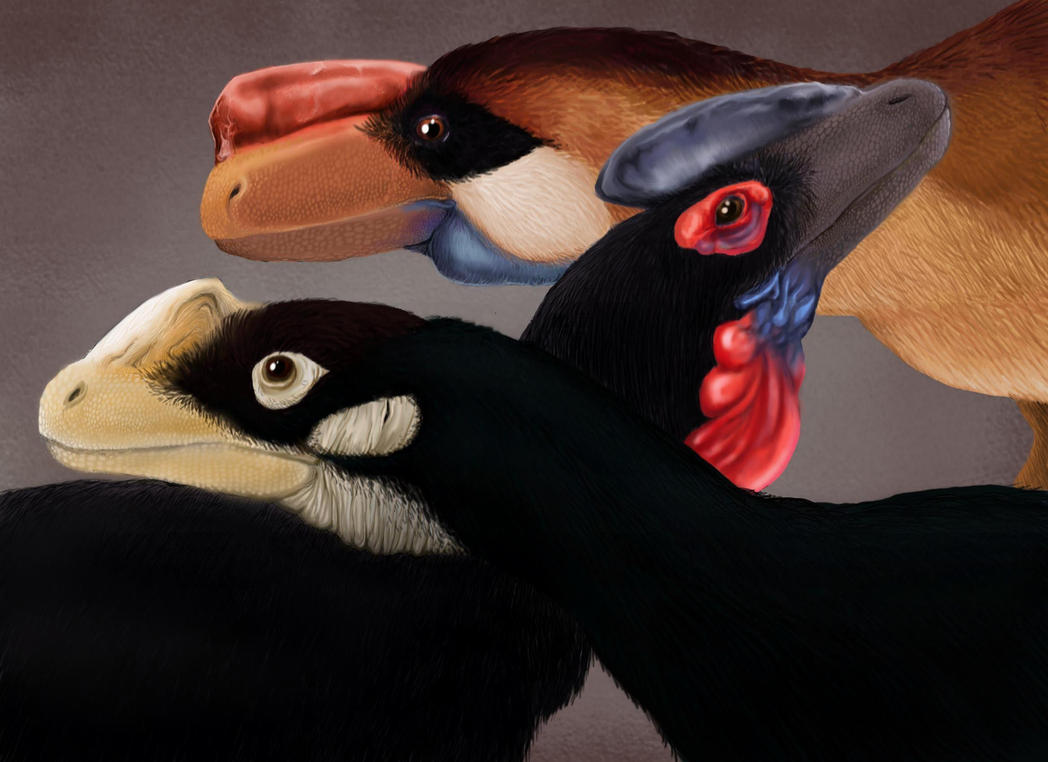Post by Dakotaraptor on Jun 20, 2013 16:10:00 GMT 5
Deinosuchus riograndensis
Deinosuchus (/?da?n??sju?k?s/ dy-n?-sew-k?s) is an extinct genus related to the alligator that lived 80 to 73 million years ago (Ma), during the late Cretaceous period. The name translates as "terrible crocodile" and is derived from the Greek deinos (
 ), "terrible", and soukhos (
), "terrible", and soukhos (
 ), "crocodile". The first remains were discovered in North Carolina (United States) in the 1850s; the genus was named and described in 1909. Additional fragments were discovered in the 1940s and were later incorporated into an influential, though inaccurate, skull reconstruction at the American Museum of Natural History. Knowledge of Deinosuchus remains incomplete, but better cranial material found in recent years has expanded scientific understanding of this massive predator.
), "crocodile". The first remains were discovered in North Carolina (United States) in the 1850s; the genus was named and described in 1909. Additional fragments were discovered in the 1940s and were later incorporated into an influential, though inaccurate, skull reconstruction at the American Museum of Natural History. Knowledge of Deinosuchus remains incomplete, but better cranial material found in recent years has expanded scientific understanding of this massive predator.
Although Deinosuchus was far larger than any modern crocodile or alligator—measuring around 11 m (36 ft) and weighing up to 6.4 t (7.05 short tons)—in overall appearance it was fairly similar to its smaller relatives. It had large, robust teeth built for crushing, and its back was covered with thick hemispherical osteoderms. One study indicated Deinosuchus may have lived for up to 50 years, growing at a rate similar to that of modern crocodilians, but maintaining this growth over a much longer time.

Torosaurus latus/ Torosaurus "utahensis"
Torosaurus ("perforated lizard", in reference to the large openings in its frill) is a genus of ceratopsid dinosaur that lived during the late Maastrichtian stage of the Cretaceous period, between 66.8 and 65.5 million years ago.[1] Fossils have been discovered across the Western Interior of North America, from Saskatchewan to south Texas. Torosaurus possessed one of the largest skulls of any known land animal. The frilled skull reached 2.6 metres (8.5 ft) in length. From head to tail, Torosaurus is thought to have measured about 9 m (30 ft) long[1] and weighed 4 to 6 tonnes (4.4 to 6.6 tons). Torosaurus is distinguished from the contemporary Triceratops by an elongate frill with large openings (fenestrae), long squamosal bones of the frill with a trough on their upper surface, and the presence of five or more pairs of hornlets (epoccipitals) on the back of the frill.[2] Torosaurus also lacked the long nose horn seen in Triceratops prorsus, and instead resembled the earlier and more primitive Triceratops horridus in having a short nose horn.[2] Two species have been named, Torosaurus latus and T. gladius. T. gladius is no longer considered a valid species, however.

Deinosuchus (/?da?n??sju?k?s/ dy-n?-sew-k?s) is an extinct genus related to the alligator that lived 80 to 73 million years ago (Ma), during the late Cretaceous period. The name translates as "terrible crocodile" and is derived from the Greek deinos (

 ), "terrible", and soukhos (
), "terrible", and soukhos (
 ), "crocodile". The first remains were discovered in North Carolina (United States) in the 1850s; the genus was named and described in 1909. Additional fragments were discovered in the 1940s and were later incorporated into an influential, though inaccurate, skull reconstruction at the American Museum of Natural History. Knowledge of Deinosuchus remains incomplete, but better cranial material found in recent years has expanded scientific understanding of this massive predator.
), "crocodile". The first remains were discovered in North Carolina (United States) in the 1850s; the genus was named and described in 1909. Additional fragments were discovered in the 1940s and were later incorporated into an influential, though inaccurate, skull reconstruction at the American Museum of Natural History. Knowledge of Deinosuchus remains incomplete, but better cranial material found in recent years has expanded scientific understanding of this massive predator.Although Deinosuchus was far larger than any modern crocodile or alligator—measuring around 11 m (36 ft) and weighing up to 6.4 t (7.05 short tons)—in overall appearance it was fairly similar to its smaller relatives. It had large, robust teeth built for crushing, and its back was covered with thick hemispherical osteoderms. One study indicated Deinosuchus may have lived for up to 50 years, growing at a rate similar to that of modern crocodilians, but maintaining this growth over a much longer time.

Torosaurus latus/ Torosaurus "utahensis"
Torosaurus ("perforated lizard", in reference to the large openings in its frill) is a genus of ceratopsid dinosaur that lived during the late Maastrichtian stage of the Cretaceous period, between 66.8 and 65.5 million years ago.[1] Fossils have been discovered across the Western Interior of North America, from Saskatchewan to south Texas. Torosaurus possessed one of the largest skulls of any known land animal. The frilled skull reached 2.6 metres (8.5 ft) in length. From head to tail, Torosaurus is thought to have measured about 9 m (30 ft) long[1] and weighed 4 to 6 tonnes (4.4 to 6.6 tons). Torosaurus is distinguished from the contemporary Triceratops by an elongate frill with large openings (fenestrae), long squamosal bones of the frill with a trough on their upper surface, and the presence of five or more pairs of hornlets (epoccipitals) on the back of the frill.[2] Torosaurus also lacked the long nose horn seen in Triceratops prorsus, and instead resembled the earlier and more primitive Triceratops horridus in having a short nose horn.[2] Two species have been named, Torosaurus latus and T. gladius. T. gladius is no longer considered a valid species, however.













